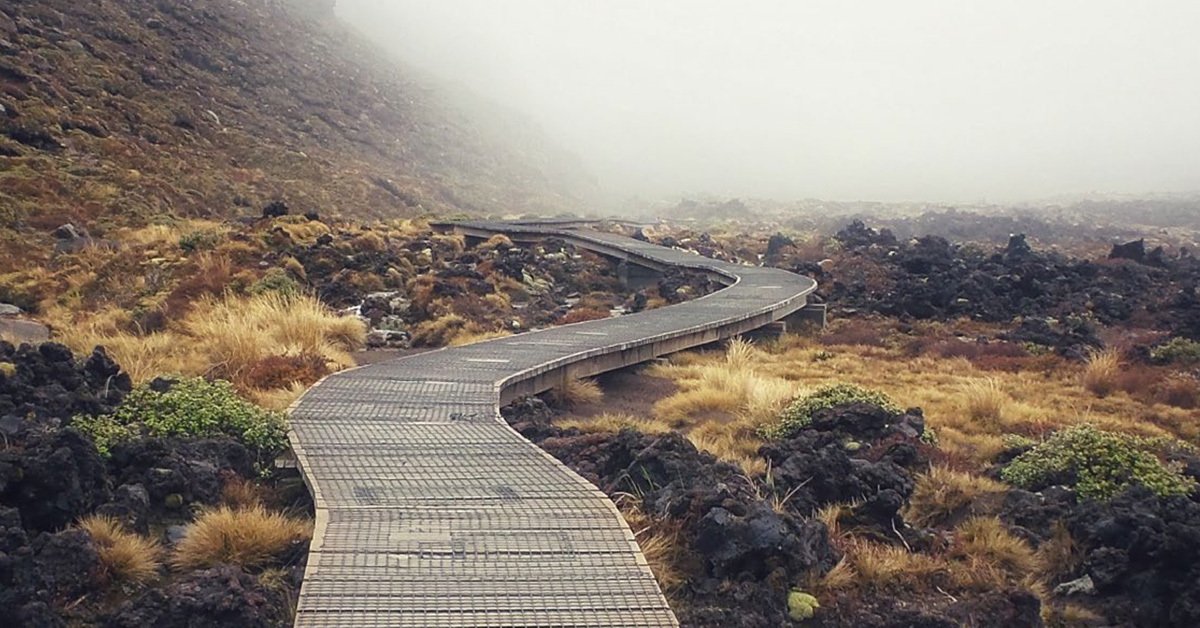
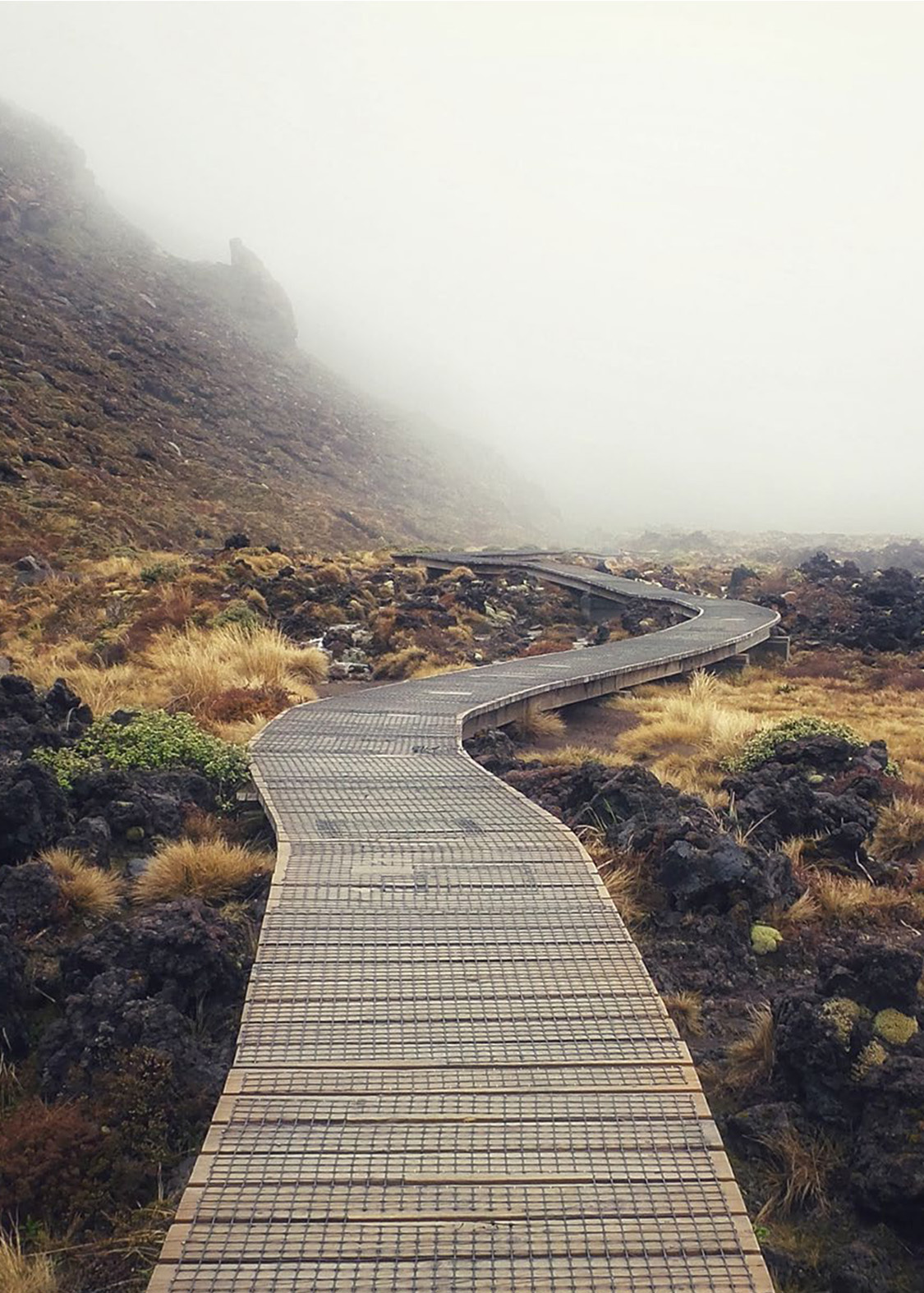
The Fate Of Our National Estate
A new report calls for partnership with tangata whenua to be at the heart of our national parks. Conservationists say this could weaken environmental protections. Iwi say it will bring an end to 135 years of alienation from the land. Who is right?
By George Driver
Tongariro National Park. Photo: Hannah Write, Unsplash.
Jacinta Ruru grew up in the small tourist town of Glenorchy, surrounded by the snow-capped peaks of the Southern Alps. Sitting at the head of Lake Wakatipu, Glenorchy is the gateway to the Routeburn Great Walk, Mount Aspiring National Park and Ngāi Tahu’s historic pounamu trails. It’s a place people come to connect with nature and unwind. But as a child growing up in the 1980s, Ruru found in this picturesque landscape a deep feeling of unease. Herself a young Māori (Raukawa, Ngāti Ranginui), she began to wonder why the surrounding peaks and rivers were etched with the names of Pakeha settlers, English towns, even from Greek mythology. Where was Ngāi Tahu?
“I knew this place was so important to Ngāi Tahu,” she says. “It would have been essential to their whole economy and to who Ngāi Tahu were for pounamu. But none of that was evident.
“Where were Ngāi Tahu in the management of this place? Where were they in the expression of why this place is important? Why were we only being told of the Scottish and English stories of how they ‘discovered’ the land and had their names on the landscape?”
Ruru’s questions took her to the University of Otago, where she studied law. A masters and a PhD followed, where she examined the role of Māori and other Indigenous peoples in managing national parks. By 25, Ruru was a lecturer at Otago. By 28 she was a Fulbright scholar. In 2016 she became the first Māori law professor in the country. She has since been made a fellow of the Royal Society Te Apārangi and appointed a Member of the New Zealand Order of Merit for services to Māori and the law.
Ruru says while New Zealand’s national parks are viewed by many with a sense of national pride — and form the bedrock of the country’s tourism industry, formerly its largest export sector — many Māori have viewed this land differently. The parks have been based on what she has called “mono-cultural Pakeha values for protecting land” at the expense of Māori culture. Despite living with and using these parks’ resources for generations, until recently Māori have had almost no say in what conservation land is for and how it should be managed. Māori traditional values and knowledge — concepts like rāhui and kaitiakitanga — were sidelined. The customary use of native species has mostly been prohibited, except at the Crown’s discretion.
“There’s been a very strong sense of loss and alienation,” Ruru tells me. “It’s the alienation of who you are as a people. The flora and fauna made up what was Māori. You cannot culturally survive if you can’t be in your home.”
However, for the past three and a half decades the legislation governing conservation land, the Conservation Act 1987, has included what has been called the most powerful Treaty of Waitangi clause in New Zealand law. Section four of the act states those bound by it must “give effect to” the principles of the treaty. All work by the Department of Conservation (DOC) must follow these principles, which include partnership with Māori, active protection of their interests and redress for past wrongs. Multiple reports and court cases since have found DOC has failed to fulfil this responsibility. Attempting to rectify these failings, in 2019 DOC appointed a panel to investigate. This year it called for New Zealand’s conservation laws, governing a third of the country, to be overhauled, putting partnership with tangata whenua at the heart of the conservation estate.
Some conservationists fear it will come at the expense of the environment. Māori claim that without change the biodiversity crisis will only worsen and more taonga will be lost. And even within groups, consensus is not guaranteed: on the West Coast of the South Island, local hapū leaders are supportive of coal mining, while in Wellington, the panel’s findings have been met with a tepid response. Yet out of all of this, the future of the conservation estate will be determined.
Preservation and exclusion
From their inception, national parks have involved the protection and preservation of a landscape in its natural state for the enjoyment of the public. But they have also seen the exclusion of those who previously lived on the land, sometimes stretching back for millennia.
The concept emerged in the mid-19th century in response to rapid deforestation and industrial development. There was a growing movement to protect areas of wilderness that were left by creating enormous government-owned reserves. In 1872, this idea was first put into practice when the United States government created Yellowstone National Park. The park’s act states the purpose was to create “a public park or pleasuring-ground for the benefit and enjoyment of the people”. Regulations would preserve the resources, “natural curiosities” and “wonders” of the park “in their natural condition”.
The idea caught on. Seven years later, the Royal National Park was created south of the city of Sydney. Banff National Park in Canada followed in 1885. However, the laws that set up these early parks also required indigenous people to be removed and excluded. As the Yellowstone Act states, “all persons who shall locate or settle upon or occupy the [park] . . . shall be considered trespassers and removed therefrom”. In Sydney’s Royal National Park, the aboriginal Dharawal people were forcibly removed and relocated to native reserves.
In New Zealand, it was meant to be different. In 1887, as the Crown was rapidly buying up land for settlement on the Central Plateau, Ngāti Tūwharetoa paramount chief Horonuku Te Heuheu Tūkino IV sought to protect the iwi’s most sacred lands. He signed a deed giving the volcanic cones of Tongariro, Ngāuruhoe and Ruapehu to the government to form the country’s first national park, the world’s fourth by DOC’s count. At the time, the Evening Post declared the park would be “without compeer in the world” and “the delight of tourists, and a possession of which the colony will be proud”. “Never has a nobler gift been made to a people of a country”, it wrote with evident approval.
The land was vested in the Crown and a romantic foundation story for the conservation estate was born. As the Tongariro National Park management plan states, unlike parks elsewhere in the world, Tongariro “was unique in that its nucleus was the gift of an indigenous people . . . creating a three-way bond between land, Māori and Pākehā”.
But in 2013, the Waitangi Tribunal found the story of the gift was a myth. Te Heuheu never intended to give the land to the Crown, the tribunal wrote in its Te Kāhui Maunga report. Instead, he was “inviting the Crown to share their taonga as joint owners and trustees”. The tribunal found the translations between the English and Māori texts of the deed were “fundamentally incompatible”. The iwi claimed the peaks were “their sacred taonga” and “the very essence of their identity” which they would never have given away. The tribunal agreed this was inconceivable.
What was meant to start as a partnership based on joint ownership and co-governance became a relationship largely dictated by the Crown. Rather than uniting Māori and Pākehā, Tūwharetoa and other iwi in the region say this was the beginning of more than a century of alienation from this land.
The Crown soon confiscated further land under the Public Works Act to add to the park. The tribunal found iwi were never consulted or compensated. While the new national park act granted Ngāti Tūwharetoa one of four positions on the park’s management board “if possible”, this seat was later diluted with appointments from conservation and recreation groups, and at one stage in the 1910s it was disestablished for some years.
The land was protected for the public, but developed into an adventure playground, perhaps not what Te Heuheu had envisioned. Ski fields were built and chair lifts extended into the most sacred part of the peaks. Sewerage leaked from poorly conceived septic tanks built for the dozens of ski club huts. A rubbish dump was even formed high on Ruapehu.
The details differ, but other national parks have similar foundation stories. Egmont National Park, the country’s second, was designated in 1900 on land the government confiscated from Taranaki iwi in the wake of the New Zealand Wars. Iwi weren’t given a position on the park’s management board until 1978, when the mountain was symbolically returned to them — and immediately given back to the Crown — to make amends for the confiscation.
In Te Urewera (which became a national park in 1954 before being disestablished in 2014), the Waitangi Tribunal said the park was created through “massive, predatory, and at times illegal purchasing” of the Urewera District Native Reserve, an area set aside in 1896 to be governed by Tūhoe.
In the South Island, Aoraki Mount Cook and Fiordland national parks sit on land Ngāi Tahu has claimed it never sold to the Crown (although the Waitangi Tribunal has disagreed). Arthur’s Pass National Park is on land that Ngāi Tahu requested be excluded from sale as part of a 90,000-hectare coastto- coast reserve between Kaiapoi and Hokitika. The Crown ignored the request, an action the Waitangi Tribunal later found was a treaty breach.
Jacinta Ruru believes Ngāi Tahu never would have agreed to sell the Southern Alps, which contained its pounamu routes, mahinga kai sites and ancestors. “They are such a strong part of their identity and there was no need to sell this land from their perspective.”
Once formed, Māori initially had little role in managing national parks or writing the laws which governed them. With the exception of Tongariro (and Taranaki from 1978), tangata whenua weren’t given statutory appointments on park boards or the National Parks Authority, despite Forest & Bird, Federated Mountain Clubs and the Royal Society gaining such representation. Even in Te Urewera, where Tūhoe were literally living inside the park in privately owned enclaves, there was no requirement for the iwi to be represented on the park’s board, although Tūhoe representatives were usually appointed.
The treaty clause
In 1987, a dramatic shift occurred. David Lange’s Labour government passed the Conservation Act. It created the Department of Conservation and saw the national parks and large swathes of Crown land formerly held by the Department of Lands and Survey and the Forest Service put under DOC control.
The act also included the most powerful treaty clause in New Zealand law. Section four states: “This Act shall so be interpreted and administered as to give effect to the principles of the Treaty of Waitangi.”
Ruru says these 20 words were monumental. “You don’t see that strong language ever again. For example, by 1991 the Resource Management Act has watered it down to ‘take into account’ the principles of the treaty.”
The Waitangi Tribunal has called it a “pivot point in terms of Crown–iwi relationships”.
The inclusion of the clause, however, passed with little contemporary comment. A report by the Environmental Defence Society notes “it is doubtful that the full implications of section 4 were appreciated at the time it was crafted”. There was scant debate on the clause in Parliament, it said, and there is nothing else in the act which details what the principles are and how they should be applied — it is the only reference to the treaty in the act.
Exactly what it means to “give effect to” the treaty principles — and what the principles are — has been a point of contention ever since.
Changes were almost immediate. DOC set up a national network of iwi liaison officers, which was called ground-breaking for the time. Consultation with iwi became routine, and in some instances iwi were able to draft park management plans. A number of treaty settlements also resulted in greater representation and consultation with Māori. But as a series of reports and court cases have found, overall DOC’s efforts have fallen short.
“There’s been a very strong sense of loss and alienation. It’s the alienation of who you are as a people . . . You cannot culturally survive if you can’t be in your home.”

Law professor Jacinta Ruru says national parks were created with a Pākehā ethos of protection and preservation which has alienated Māori from a crucial part of their culture. Photo: Supplied.
In 2011, the Waitangi Tribunal released the landmark WAI 262 report on Māori aspirations to restore tino rangatiratanga over flora, fauna and other taonga. The report was 20 years in the making and found that, while DOC made efforts to “inform and consult [tangata whenua], and sometimes involve them in decision-making”, this rarely went far enough. It called for a review of all conservation legislation “with the aim of bringing together and reconciling the differing approaches to conservation management represented by matauranga Māori and te ao Pākehā”. Customary use of plants and animals in national parks should be managed by joint committees and allowed with “appropriate conditions”. It said wildlife should be taken out of Crown ownership and owned by no one, with protected species managed in partnership with iwi. Tangata whenua should also be given a reasonable degree of preference when permits were being issued for commercial activity on the conservation estate.
Two years later, in its report on claims relating to Tongariro National Park, the tribunal recommended it be taken out of Crown ownership and become jointly owned and managed with iwi.
But the biggest trigger for change came from an innocuous-sounding court case about permits for walking tours on Rangitoto and Motutapu islands in the Hauraki Gulf. Auckland iwi Ngāi Tai ki Tāmaki challenged DOC’s decision to grant concessions to ferry and tourism operators Fullers Group and the Motutapu Restoration Trust, claiming the iwi’s economic interests should have been taken into account and it should be granted the permits exclusively.
In 2018, the Supreme Court found DOC’s policies for national parks and conservation wrongly asserted that the treaty clause could be trumped by other parts of the Conservation Act. It said the department was required to take into account the economic interests of iwi when making decisions under the treaty principle of active protection. In essence, if DOC failed to give effect to the principles of te Tiriti o Waitangi in all of its work, it was open to legal challenge from iwi.
But it was a qualified win for Ngāi Tai. DOC wasn’t required to decline the walking permits, but had to reconsider the applications. The court said other elements of the act still applied. Principles like public access and the protection and preservation of nature on DOC land weren’t trumped by the treaty clause, but these must be achieved “in a way that best gives effect to the relevant Treaty principles”.
Of the Ngāi Tai action, Ngāi Tahu called the decision a “game changer” that would change the relationship between iwi and DOC forever.
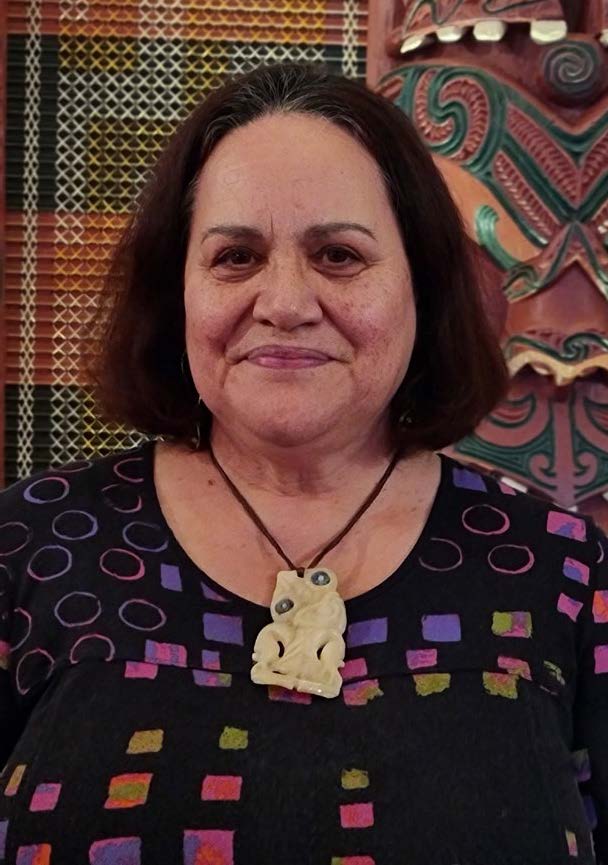
Aroha Mead co-authored a report which has called for an overhaul of conservation laws to enable partnership with iwi at all levels.
A tranche of DOC’s work ground to a halt while it grappled with the ruling. Years of work developing new park management plans for Aoraki Mount Cook and Westland Tai Poutini national parks was paused — the Westland plan was later abandoned entirely. The plans, which set what activities can and can’t be undertaken in each park, are meant to be reviewed each decade but no review has been completed since the Ngāi Tai case and all but two are overdue (and one of them is due for review this year).
The following year DOC launched a review of its general policies for both conservation and national parks — often described as the manuals for how it interprets conservation laws — to understand how it should apply the treaty clause. In 2020 it appointed an independent panel, dubbed the options development group, to make recommendations. This consisted of eight members nominated by iwi and Māori organisations, four nominated by the conservation boards and three DOC officials.
It took almost two years, but when the options development group’s report was released in April it was radical. The group found DOC had “fundamentally misapplied” the treaty clause. It called for a rethink of the entire conservation system to infuse the principles of te tiriti into “the infrastructure of the entire conservation system”.
It made seven recommendations, including for the ownership and classification of all conservation land to be reviewed. It said the existing models were “based on ‘western’ views that do not reflect the relationship that tangata whenua have with the environment — a relationship that requires interaction with the environment irrespective of legal ownership”. It said alternative options could include “new land titles that reflect the interests of tangata whenua and the Crown”, and “the return of land to tangata whenua for conservation purposes”.
It said the purpose of conservation should be changed. The current definition in the Conservation Act — based on “the preservation and protection of natural and historic resources for the purpose of maintaining their intrinsic values” — reflects a “Eurocentric ethic” that excludes humans, except for recreation. “The tangata whenua environmental ethic of kaitiakitanga, reciprocity between humans and the environment, and sustainable use is not provided for at all.” It suggested a new “shared vision for conservation” — something like “the maintenance, enhancement and sustainable use of whenua, moana, wai and the species that rely upon them . . .”.
“Sustainable use is an essential part of the conservation ethic for the sustenance of tangata whenua as a people; it is critical for cultural survival, identity and knowledge,” the report said.
It also recommended revoking Crown ownership of indigenous species, lands and taonga, greater cogovernance, and the devolution of decision-making to iwi. In other words, it called for the overhaul of how a third of the country is managed, and who manages it.
Report co-author Aroha Mead (Ngāti Awa, Ngāti Porou) says transformative change is what is required. Mead was on the governing council of the International Union for Conservation of Nature (IUCN) for 16 years. She says the members of the options development group came from diverse backgrounds but were unanimous in their recommendations. The country is facing a biodiversity crisis and the status quo is not working, she says. Other countries, like Australia and Canada, discovered decades ago that enabling indigenous people to own and manage public conservation land will help. It’s time for New Zealand to do the same.
“The way that we’re delivering conservation, the scale and pace is insufficient,” Mead says. “That is why our biodiversity continues to decline. So if you understand that, then surely you would want to see what else is out there. And many countries worked out much earlier that working alongside Indigenous peoples — who have lived in lands, taken care of them and used their resources sustainably for generations — makes so much sense.”
Protection versus use
For others, the proposals sound like a pathway to environmental destruction. It’s the concept of ‘sustainable use’ that has Federated Mountain Clubs (FMC) immediate past president Jan Finlayson concerned. “That sounds like exploitation to me,” Finlayson says. “What does sustainable use mean? And by whose measures?”
FMC represents about 22,000 tramping, climbing and ski club members around the country. Finlayson, who chaired the organisation for three years until May this year and has been on its executive since 2015, says the protection ethos of national parks developed to reign in the impact humans have on nature for good reason. We’ve proven we can’t be trusted to use resources sustainably, she says. We need to keep some areas for nature’s own sake, free from human interference.
“Our conservation legislation is an essential and direct answer to the catastrophic harm that humans have caused to nature here,” Finlayson says. “Our species settled here just over 700 years ago. The first human wave burned around a third of the forest and pushed many species to extinction or to the margins. The second wave bought more vicious tools and technologies and doubled down on that.
“The shape of our conservation legislation was triggered by that. It puts the health of that third of Aotearoa ahead of all human interests, whether that’s recreational, economic or anything else. Nature’s got to come first. If you keep taking away then you end up with nothing.”
It would be fair to say that national parks have hardly been left untouched by recreation groups. Many contain ski fields, roads, small villages. However, Finlayson says FMC now advocates only for low-impact recreation on conservation land.
“Our conservation legislation is an essential and direct answer to the catastrophic harm that humans have caused to nature here.”

MC past president Jan Finlayson says national parks were created to protect nature from the impact of humans and strict regulations are necessary to prevent further destruction. Photo: Supplied.
“People make mistakes and we learn as we go,” she says. “While backcountry recreation inherently involves modest facilities, if any, there are instances where infrastructure could have been done better. Now we don’t advocate for lavish facilities because it tends to lead to the land being hammered.”
She says concepts like mahinga kai, mātauranga Māori and kaitiakitanga are “inherently subjective and quite anarchic concepts without a commonly understood set rules”.
“They will never be compatible with the structures, systems and the agencies that the Crown has.” Existing avenues for Māori influence are adequate, she says.
Aroha Mead disagrees, strongly. She says the term “sustainable use” isn’t about commercial exploitation, but allowing Māori to sustainably collect materials for the likes of carving, weaving and medicine. “I find that a really naive way of looking at a complicated problem because it doesn’t take note of scale. You can’t compare large-scale commercial operations with Māori customary harvesting of materials.”
“We need to be more future focused and stop dredging up the [extinction of the] moa. I mean, if I hear this story one more time I’m honestly going to throttle someone.”
FMC’s new president, Robin McNeill, has a different perspective to his predecessor. McNeill was elected in May and is broadly supportive of the options development group’s recommendations. “I think it addresses something New Zealand is ready for,” McNeill says. “It’s always going to be difficult to get a Māori worldview to sit alongside the western European worldview because there’s a lot of things that are different. But at the same time it’s really encouraging because there’s lots of things that are the same. The things that Māori value about the land are things recreationalists value too.”
The “preservation and protection” versus “use” debate is one that has divided indigenous peoples and conservationists worldwide. Mead says New Zealand conservationists are particularly renowned as “category one people” — viewing nature as a space without people. “There are basic values that we don’t share.”
However, Mead isn’t entirely opposed to preventing the “use” of national parks, if that’s what’s required for native species to recover. “Where I would differ is that I don’t think you have to do that permanently. In most cases it’s learning how to manage the human– biodiversity interaction so that it causes the least damage and in fact creates a positive outcome.”
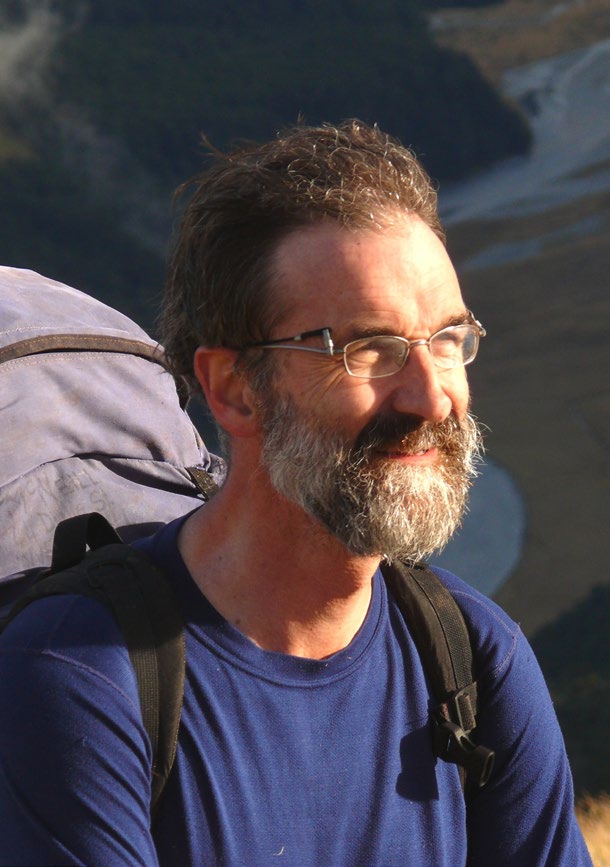
FMC president Robin McNeill says while Māori and Pākehā have different views on what conservation land is for, both believe in looking after the land for future generations. Photo: Supplied.
Forest & Bird declined to be interviewed about the report. Communications adviser Lynley Hargreaves said the organisation was “still in the process of developing our thinking on this” and so “can’t actually speak publicly at this time”.
Environmental Defence Society Chief Executive Gary Taylor, however, says integrating a Māori worldview into conservation could be positive.
“It’s actually a helpful way of thinking about the environment for all of us, but also it’s part of cultural redress,” he says. “We do need to talk as a broader community about what our aspirations for our natural world are and how that Māori worldview can be embedded therein without causing offence to people . . . It’s challenging, it’s difficult and it’s quite nuanced.”
One of those challenges is the idea of killing and eating native birds. Hoani Langsbury (Ngāi Tahu) was also on the options development group and says being able to harvest native species — including birds — is an important principle that should be provided for in the Conservation Act. Langsbury qualifies this by saying it should only be permitted if the population can sustain a harvest.
“Whether we do it or don’t do it is not the question, it is whether we are able to do it,” he says. “And at the moment it’s not enabled through most of the conservation legislation.”
As someone who has spent almost five decades working to protect native species, Gary Taylor finds it a difficult concept to accept. “My cultural norms are offended by the idea of the cultural harvest of native birds,” Taylor says. “But in my head, I can see that if you’ve got an abundant supply, and it’s important for Maori cultural values to take them, then . . .” He can’t quite bring himself to finish that thought. “That’s why I’m not in government,” he says. “They need to reconcile those conflicts.”
Langsbury says cultural harvesting can actually aid conservation. It is already being planned for in some areas. In Otago, Ngāi Tahu have been involved since 2001 in a project with DOC to reintroduce buff weka to the region. Weka were once an important food source for Ngāi Tahu but had been eradicated by predators in Otago.
“We were always clear that the ultimate goal is a population that can be sustainably harvested,” Langsbury says. “We don’t know when that will be. It might be a century off or we may get there in 10 years’ time, but it’s about ensuring that aspiration is clear and can be talked about and managed.”
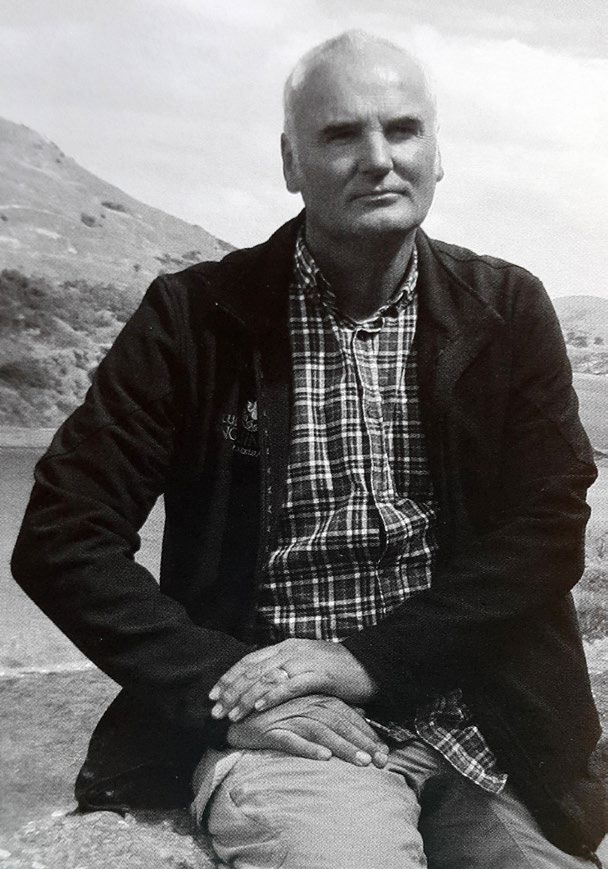
Hoani Langsbury says the cultural use of materials on conservation land is an important part of Māori culture and should be permitted. Photo: Supplied.
Discord in Westland
On the West Coast, the debate between preservation and use of the DOC estate has been playing out for decades. About 84 per cent of the region is conservation land, and FMC, Forest & Bird and Poutini Ngāi Tahu, representing the two West Coast hapū, have butted heads to the point where a conservation board has been riven with discord and the iwi has brought court action against the conservation minister over board appointments.
FMC executive member Neil Silverwood spent two years on the West Coast Tai Poutini Conservation Board — an independent body that advises and provides oversight on DOC decisions — and says Poutini Ngāi Tahu has been consistently advocating for economic development over environmental protection.
“Not once did any of those three [Ngāi Tahu] members advocate for the environment,” Silverwood says. “In every instance they advocated for commercial development [on conservation land], and not just commercial development for iwi, but more broadly.”
Last year, Silverwood and two other members resigned from the conservation board due to ongoing disagreement with Ngāi Tahu members on the board. In a joint resignation letter to then-conservation minister Kiri Allan, they said “the relationship between DOC and Ngāi Tahu in the Western South Island has become almost exclusively focused on economic considerations and is more akin to a business partnership than a conservation one”.
On the other hand, the Poutini Ngāi Tahu members previously boycotted the board’s meetings for months between 2019 and 2020, claiming it had been taken over by extreme conservationists. Westland mayor Bruce Smith also made similar claims. The iwi ended up taking then-conservation minister Eugenie Sage to court after she reappointed FMC executive member Keith Morfett to the board. They claimed the minister must consult with them before making appointments to meet its treaty obligations. Morfett later resigned, citing “intolerable pressure from Ngāi Tahu”.
“My cultural norms are offended by the idea of the cultural harvest of native birds. But in my head, I can see that if you’ve got an abundant supply, and it’s important for Māori cultural values to take them, then . . .”
Silverwood says a number of conflicts of interest aren’t being appropriately managed. Poutini Ngāi Tahu is directly involved in some developments on or related to conservation land. In May, it announced it had formed a partnership with Westpower to appeal the government’s decision to decline the controversial Waitaha Hydro Scheme. The power station would be built on conservation land using water diverted from a pristine river but the government vetoed it in 2019 due to the environmental impact.
In a Westpower press release in May, Poutini Ngāi Tahu leaders said the power station could provide renewable energy with a small environmental footprint. It’s understood Ngāi Tahu Poutini has written to DOC claiming the government’s decision to block the project was a breach of its treaty obligations under section four of the Conservation Act.
The chair of the runanga of West Coast hapū Ngāti Waewae — one of the two hapū that make up Poutini Ngāi Tahu — Francois Tumahai, is also active in the region’s coal-mining industry.
Last year Tumahai — who is married to Te Rūnanga o Ngāi Tahu Kaiwhakahaere (chair) and Climate Change Commission deputy chair Lisa Tumahai — was appointed as a director of Bathurst Resources Limited, the largest coal-mining company in the country. His profile on the company’s website says he is “an ardent supporter of the mining industry”.
Ngāti Waewae also reportedly bought a 19-hectare non-operational coal mine surrounded by conservation land on the Denniston Plateau in 2018 after thenconservation minister Eugenie Sage blocked Bathurst from buying the land. According to its website, Bathurst still holds the mining licence for the coal mine.
Poutini Ngāi Tahu has since opposed giving conservation land beside the site greater protection because “it’s being considered for mine remediation by government agencies”.
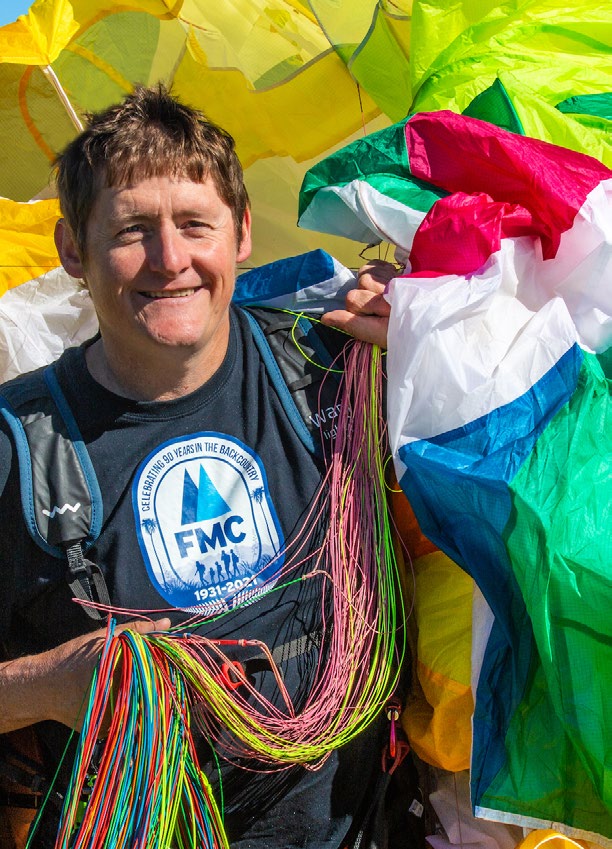
FMC executive member Neil Silverwood resigned from the West Coast Tai Poutini Conservation Board last year due to concerns that Ngāi Tahu board members were advocating for economic development of conservation land. Photo: Supplied.
Neil Silverwood is concerned that if Ngāi Tahu is given a greater say over conservation on the coast, it will use this influence to pursue its economic interests in the region, which include tourism, forestry, farming and mining. “There are massive conflicts of interest that just aren’t being dealt with,” Silverwood says.
Ngāi Tahu and Poutini Ngāi Tahu declined to be interviewed or respond to questions and referred North & South to previous media statements it has made.
Last year, Francois Tumahai rejected the claims raised by Silverwood and other past conservation board members. He said the runanga was working in partnership with DOC, which, while “challenging for some individuals . . . is specifically mandated by section 4 of the Act”.
Tumahai has previously been reported as saying he is “acutely aware of professional boundaries when representing his iwi, whānau and whenua in multiple roles, as many Māori leaders have to”.
Aroha Mead says “leaders need to be vigilant around conflicts of interests”, but adds the accusations on the West Coast stem from “a fear of Māori rather than anything directly actually happening”.
“It’s not a huge problem as to whether iwi are going to open up the conservation estate to develop. There’s no precedent for that.”
But if DOC is required to consider the economic interests of iwi, what happens if an iwi wants to develop conservation land at the expense of the environment?
Hoani Langsbury says iwi wouldn’t be allowed to damage the environment for economic benefit under the changes the options development group proposes — or under existing legislation. It comes back to the purpose of the Conservation Act. The environment comes first. “Conservation would trump economics, otherwise you’re not looking after the whenua and if you just continue to take from it, then eventually the whenua will fail.” But he also says it’s possible mining or logging could be defined as “sustainable use” in some circumstances.
“I don’t think it precludes that because I think everything needs to be on the table. Then the discussion is on the merits and implications of these types of sustainable use and they can be considered on their merit.”
Robin McNeill says regardless of who sets the rules in national parks he has faith in the public consultation process as a check on conflicts of interest. “At the end of the day democracy rules. You could have the most jaundiced consultant writing a park plan with a commercial bent on it, but when that goes to the public for submissions it would get the thumbs down and the department would not be able to continue with it.”
An “interesting
think-piece”
It’s not yet clear what will come of the options development group report. It appears to have had a lukewarm reception from the government. Kiri Allan has called the report “an interesting think-piece” and indicated it was “not likely to translate directly into policy”.
“I think it is a sound piece of work but in terms of next steps, there is quite a bit of water to go under the bridge before I formulate my views of where the next steps will be,” she told the New Zealand Herald in April (In the June cabinet reshuffle, Allan took up the justice portfolio and Poto Williams was given conservation).
The government is already undertaking an ambitious review of selected conservation laws. Last year, Allan launched a “conservation law reform roadmap”, which includes reviewing the Wildlife Act 1953. At the policy launch, she said the act “needs to better address opportunities and challenges for customary rights and recognising mātauranga Māori, rangatiratanga and kaitiakitanga”. But “down the track”, DOC would also look at “at the full suite of conservation law and how it currently functions”.
When the report was released, DOC Director- General Penny Nelson said it was an “honest and challenging view” and “will take some time to consider”. In a statement, DOC policy director Kayla Kingdon-Bebb said it is still preparing advice to the minister and expects to begin consultation on some amendments to its general policies in the third quarter of the year. She said any changes to conservation laws would be considered as part of the government’s broader conservation law reform and no timeline has been set.
As those law changes creep on, enormous changes are already under way as the result of treaty settlements.
In 2014, Te Urewera’s national park status was revoked and the 212,000-hectare park became its own legal entity as part of Tūhoe’s treaty settlement. The land now effectively owns itself, but is governed by a board consisting of six Tūhoe appointees and three from the Crown and funded by DOC.
It was a historic moment for iwi–Crown relations in an area the government has acknowledged “suffered some of the worst [treaty] breaches by the Crown in the country’s history”.
However, a divide has surfaced here too — questions are being raised about how the concept has worked in practice. Earlier this year Stuff reported huts and bridges have been falling into disrepair and there were growing tensions between Tūhoe and DOC. Te Urewera Board chair Tāmati Kruger said the relationship had failed and DOC hadn’t sufficiently funded the board to take care of the land, a claim the minister is investigating. Conservationists have also claimed Tūhoe is neglecting pest control, and the iwi has so far opposed the use of 1080 in Te Urewera. The board says it is undertaking a more holistic approach to pest control.
Tongariro and Taranaki national parks are set to go in a similar direction. In 2017, the government announced Taranaki would become a legal personality “with joint responsibility shared between local Māori and the government”. In a statement, DOC treaty negotiations director Stephen Karaitiana said negotiations are ongoing but an agreement is expected later this year.
The Crown is also negotiating cultural redress with iwi relating to Tongariro National Park after reaching a settlement with Tūwharetoa in 2017. In 2018, Treaty negotiations minister Andrew Little said there was “a wish to keep the national park system in place but with proper iwi engagement”. However, negotiations have since been put on hold at the request of iwi.
“We can make it a good legacy if we’re up to having some really good, considered, respectful conversations.”
In Glenorchy, Ngāi Tahu’s presence is now more obvious than when Jacinta Ruru was a growing up there. The iwi’s tourism arm runs jet boat tours, horse treks and guided walks through the neighbouring national park. As part of its treaty settlement, Ngāi Tahu names have been restored to some of the park’s peaks — albeit following the English ones (notably Mount Earnslaw Pikirakatahi and Mount Aspiring Tititea).
Ruru says the kinds of settlements seen in Te Urewera, Taranaki and Tongariro were unthinkable in the 1990s, when Ngāi Tahu’s settlement was signed. “Then the Crown had an absolute bottom line that conservation land would not be returned to Māori,” Ruru says.
Ngāi Tahu now opposes any additions to the South Island national parks. It recently said that the “more stringent preservation and protection imperatives” obstructs the iwi from maintaining ancestral relationships with the whenua. It says until conservation law reform is enacted, expanding the national parks would be in breach of section four of the act.
Ruru, however, is optimistic about further change. She says it’s important to acknowledge that national parks have a positive legacy — the land hasn’t been privatised and developed. There just needs to be some flexibility in how it is cared for.
“We can make it a good legacy if we’re up to having some really good, considered, respectful conversations to try to deeply understand and value the Māori connection to the conservation estate. I think it’s something that’s going to be added and actually enable what we all want, which is that these lands are going to be there for future generations.”
George Driver is our South Island correspondent. This role is made possible by New Zealand On Air’s Public Interest Journalism.

This story appeared in the August 2022 issue of North & South.


